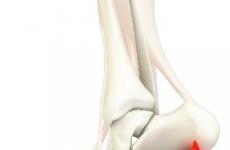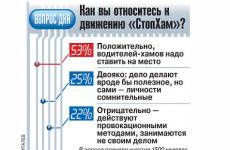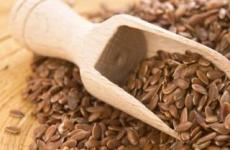What is cement waterproofing, main types: coating, polymer, methods of application. Waterproofing and diffusion polymer membranes: the right choice and installation. Polymer waterproofing Advantages of polymer waterproofing
Polymer waterproofing is represented by compositions based on polymers (primarily polyurethanes), which are ideal for carrying out work to ensure the protection of objects for various purposes from the destructive effects of moisture. Waterproofing with polymeric materials is easy to apply on both horizontal and vertical surfaces. It effectively fills seams and joints and provides them with reliable protection against moisture penetration.
Polymer waterproofing of the foundation or other building elements provides for the polymerization of the applied composition when it comes into contact with air. As a result, a flexible and very durable membrane is formed that can become a barrier to moisture.


Application
Polymeric waterproofing materials are deservedly considered universal. They can be used for waterproofing:
- residential and industrial premises;
- concrete and reinforced concrete structures;
- floor slabs;
- rooms with high levels of humidity (toilets, showers, bathrooms, saunas, swimming pools).
Polymeric waterproofing of the floor and other objects on the bases of the following materials is allowed:
- concrete;
- brick;
- plaster;
- glass;
- wood;
- drywall;
- zinc coated steel;
- Styrofoam;
- roof tiles.
Advantages
Polymer waterproofing for roofs and other building elements has good adhesion to plasters and various adhesives for tiling. It can also be used before laying with linoleum and laminate flooring. Of course, these are not all the advantages of polymer waterproofing. The rest are as follows:
- excellent adhesion to different types of substrates;
- high ductility to withstand deformations and distortions of building elements;
- immunity to ultraviolet rays and temperature extremes;
- long service life, which ranges from 25 to 50 years;
- ease of application, the ability to apply both manually and with special equipment.
Cement waterproofing protects various structures from moisture. Materials in this group are often used for many benefits. With the correct mixing of the components, high reliability is ensured, and the service life of the coating is increased. There are different types of cement-based mixtures. When choosing, take into account their composition, properties.
Peculiarities
Waterproofing mixtures are used to protect various surfaces from water: floors, walls and ceilings, joints, etc. Cement-based materials have become widespread. This is due to the reasonable price, relatively simple application.
Despite the fact that cement absorbs some moisture, mixtures containing such a component provide high protection against water exposure. At the same time, there are no contradictions in properties, since in the manufacture of waterproofing on a cement basis, special additives are used that greatly improve the characteristics of the material.
For waterproofing surfaces, formulations containing stress cement are used. It is distinguished by increased strength, resistance to cracking. Compared to other brands, such cement absorbs moisture to a minimum. The use of hydrophobic additives, plasticizers increases the resistance to water, enhances reliability by increasing the plasticity of the mixture.
Waterproofing is applied in a layer of substantial thickness, due to which the treated structure is better protected. The principle of application is similar to the method of using plaster mixtures. Thanks to the waterproofing layer, condensation does not form, which gradually destroys the structure and cladding. As a result, the protected surfaces retain their attractiveness longer and serve for a long time.

Advantages and disadvantages
Positive traits:
- wide range of applications: protection of foundations, fencing of single-storey and multi-storey buildings, waterproofing of pools and tanks in contact with water, preparation for cladding of bathrooms, balconies, application to structures that are exposed to a significant load of water under pressure, during flooding of premises;
- a high degree of protection against the influence of moisture, cement-based waterproofing can be used in any conditions, even in the most difficult;
- simple application principle;
- the possibility of applying to a moistened surface, which is due to the presence of cement in the composition, the adhesion of which only increases if the moisture content of the protected surface is first increased;
- providing protection against corrosion;
- absence of a chemical reaction upon contact with aggressive media;
- resistance to low temperatures;
- vapor permeability;
- lack of harmful components.
There are few disadvantages of such mixtures. They note the possibility of applying only to structures that have already gained strength. In addition, cement-based waterproofing materials provide a high degree of protection, provided that several layers of material are applied to the enclosed structure.
Varieties in composition
When choosing, take into account the type of components, the structure of the mixture. The material is selected taking into account the intended purpose of the enclosed structure, operating conditions. Waterproofing must correspond to the temperature regime at which it will be applied and served in the future. Violation of this condition will lead to the gradual destruction of the protective layer.
Cement-sand waterproofing
The composition is available in the form of a dry mixture. This is the simplest type of waterproofing in terms of properties, which is due to the use of cement as the main component. The mixture is quite tough; during the drying process, the protective coating should be often moistened - up to 3 times a day for 2 weeks.
For application, it is recommended to use the spray method of the composition using special equipment. The main purpose of the cement-sand mixture is to protect the monolithic foundation of objects. If you plan to apply waterproofing with your own hands, to increase the density of the composition, you need to introduce special additives. Without them, the service life of the waterproofing will be reduced, and the coating will not perform its functions.
The mixture is applied sequentially several times. When the work is finished, it is recommended to protect the fenced structure from possible damage during drying.
However, the surface of the waterproofing layer can still deform. In this case, moisture evaporates unevenly, which leads to a change in volume with different intensity.

With the addition of latex
Due to this composition, the plasticity of the material is ensured. Latex increases the resistance of the waterproofing to cracking. The material tolerates the effects of temperature extremes and low values of this parameter much better. As a result, the cement mixture resembles liquid rubber in appearance and properties. After applying the material, an impermeable coating is obtained, which reliably protects the enclosed structure from moisture.
You can add latex to the cement mixture yourself, keeping the proportions. However, it is much easier to use a ready-made mixture.
Mandatory conditions when working with such material:- application of the method of gunning or spraying on a surface that has been carefully prepared beforehand;
- the mixture should be hot.
The result is a seamless coating that does not allow moisture to pass through, does not crack, is resistant to mechanical stress and lasts a long time, and also withstands exposure to high temperatures.

With liquid glass
Such a component is added to the cement mixture, which improves the properties of a hard cement-sand mortar. Most often, the material is used to protect the foundation, basement floors, and to form refractory coatings.
Advantages of formulations based on liquid glass:- protection against high temperatures;
- high adhesion;
- manifestation of antiseptic properties;
- lack of toxic components in the composition.
- liquid glass is applied to seams, joints, cracks, this option is used as an auxiliary measure, after applying this type of waterproofing, roll material is also used;
- liquid glass is used as the main component of a cement mixture intended for pouring a foundation.
Cement-polymer
The composition includes Portland cement, sand, plasticizers. Cement-polymer waterproofing has improved properties. The main advantage of such a material is considered to be high resistance to tensile and tensile loads. This is due to the formation of molecular bonds with the combination of polymer components and cement. As a result, the enclosed structure tolerates dynamic loads well and is resistant to cracking.

There are different types of polymer-cement mixtures:
- waterproofing adhesive;
- waterproofing.
There are one- and two-component formulations. Moreover, the second of the options is more common. It contains acrylic emulsion, microfiber. Such material is used when there is a high risk of deformation loads (cracks of more than 1 mm are formed). In other cases, you can use dry one-component mixtures.
Types of compositions by the method of application
Materials differ in structure and method of application. The choice is made taking into account the state of the enclosed structure. Penetrating compositions are preferred for use on surfaces that are porous. Cement-based waterproofing coating type, plastering and elastic coating mixture are applied to the surface. Certain types of materials are intended only for the repair of objects.

Coating
This is the most common mixture, it is used to protect various surfaces during construction and at the stage of repairs: floors, walls, ceilings, balconies, bathrooms, foundations, water tanks. Lubricating waterproofing allows you to create an impermeable layer on the protected surface that thoroughly protects against water.
Operated for a long period, fills the smallest cracks. Such a composition can be applied to surfaces made of different materials: drywall, metal, brick, wood, concrete, etc.
Elastic coating
This group includes materials containing plasticizers. These are auxiliary components that are used to increase the elasticity of the cement composition. This type of mixture is recommended to be used to protect surfaces of complex configuration, prone to the formation of small cobweb-like cracks up to 0.5 mm wide.
The advantages of elastic waterproofing include increased strength. It is permissible to apply it on the surface: pool, terrace, balcony, water tank. It differs from the classic waterproofing of the coating type by its high price.
Plastering
This version of the material is susceptible to cracking, therefore it is not recommended to use it with increased dynamic loads. The surface of the enclosed structure should not deform, then a significant duration of the waterproofing service is ensured. To improve the properties, it is allowed to add auxiliary components, for example, water glass. This type of material has the advantage of being able to flatten curved surfaces and at the same time provide protection from moisture.

Penetrating
Waterproofing of this type can only be used to protect concrete and reinforced concrete structures. This is due to the fact that the composition provides efficiency provided that the protected surface is porous. Waterproofing penetrates the structure of concrete, when it comes into contact with moisture contained in such a material, it crystallizes, clogging the pores.
This prevents the risk of moisture penetration. Such a composition is used when it is not possible to protect the external surfaces of the structure with external waterproofing.
Repair compositions
They are characterized by a high drying rate. This type of material is recommended for filling joints and cracks. It can be used on different surfaces, including when restoring the foundation. The advantages of this mixture include the absence of drying shrinkage.
Water plug
The material is used when it is necessary to quickly restore the integrity of concrete pressure head structures. It is used to repair objects made of stone, concrete, reinforced concrete. Produced in dry form. Upon contact with water, when the mixture clogs the deformed area in the thickness of the concrete or stone structure, the cement composition instantly hardens, forming an impenetrable barrier for water. The advantage of the water plug is high adhesion to the enclosed surface. It is used even if there is a leak.

Application technology
Instructions:
- If the base is old, it is repaired: the top layer is removed, cleaned, leveled using special mixtures.
- Before applying cement compositions, the surface is moistened.
- When the excess moisture evaporates, and the enclosed structure is poorly moistened, waterproofing is applied.
- A spatula or special equipment for spraying the mixture is used in the work.
- The material is applied several times. After the formation of the first layer, you need to wait 2-3 days, during this period the surface is moistened.
- For 3 days, until the first layer has dried, the next one is applied, and then another one. The cement-based waterproofing should not be allowed to cover the dry surface.

Manufacturers
To purchase quality certified material, products of common brands are considered. It should be borne in mind that prices differ in Moscow and the regions.
Ceresit CR 65
It is a rigid cement waterproofing. Application area:
- internal and external surfaces;
- structures buried in the soil;
- bathtub pool and other reservoirs;
- protection of walls, floors and ceilings in rooms with high humidity;
- waterproofing of hydraulic engineering and treatment facilities;
- protection of various objects from destruction and exposure to low temperatures.
On deformable objects, an elasticizer is added before using the mixture.
Bergauf Hydrostop
Waterproofing belongs to the group of materials of the coating type. It is a one-component mixture, applied with a thickness of 1-5 mm. It gains strength after 28 days and is resistant to bending and compression loads. The composition can be used in conditions of high and low temperatures: -50 ... + 70 ° С.
Cement NC
Stress cement belongs to a separate group of materials, since it has a high linear expansion rate, does not shrink, does not deform. This is the most durable substance, and it also wins in comparison with Portland cement in terms of moisture resistance. The material contains almost no pores, therefore it protects well from moisture.
The greatest danger to many building materials is water and its fumes, which accelerate their aging and decay. To avoid this and extend the life of building materials and buildings made of them, waterproofing is widely used.
There is a wide variety of modern waterproofing materials, each with its own characteristics. One of them, which has become widely known recently, is polymer waterproofing. In most cases, it is based on polyurethane, to which furan, phenol-formaldehyde, urea and other resins are added.
Features of polymer waterproofing:
The scope of application of such waterproofing is very wide. It is used to protect ground and underground structures and structures, hydraulic installations, roofing and floor coverings, walls, foundations, etc. from water and moisture.
Moreover, all polymer waterproofing is subdivided into several categories:
Method of application
Consistency
It can be liquid or semi-liquid, and according to the component composition - cement-polymer or bitumen-polymer.
Appointment
The first contains Portland cement and synthetic resins, additives and fillers. The finished composition is a rather plastic mass, similar to plasticine. One of the conditions for the durability of a waterproofing coating made of this material is the absence of dust and debris particles in it (this must be carefully monitored during work).
The second is made on the basis of oxidized bitumen with an organic solvent. In addition, various substances are added to the mixture that increase the characteristics of the waterproofing. It is released in the form of mastic, which is associated with some of the features of this waterproofing material. So, when it dries, it forms an uneven surface, which must be covered from above with a screed (if the floor is insulated) or sheathed with finishing material (on the walls).

Application of polymer waterproofing:
Most often, polymer waterproofing materials are used to treat dry surfaces, but there are also those that can be safely applied to wet ones.
In this case, most of the compositions are sold in dry form, and they must be prepared immediately before application. The main condition for this is the observance of the correct proportions and quick application of the compositions, since the "life span" of many of them is only a few hours (and sometimes even minutes).
In addition, polymer waterproofing is usually highly toxic and fire hazardous. Therefore, when working with them, it is important to strictly observe safety rules. True, at present, manufacturers are already producing practically harmless formulations that can be used in closed rooms.

Advantages of polymer waterproofing:
The indisputable advantages of this waterproofing material include the fact that it forms a continuous seamless fabric with high water-repellent properties.
It is durable (warranty from 25 years, but in practice this period is much longer). At the same time, the waterproofing layer does not thin out over time, and remains as even and durable as just after application. By the way, the service life of the cement-polymer coating is much longer than the bitumen-polymer coating.

It is also considered a plus that it is equally suitable for any structures - it can be easily applied even to complex and small, convex and concave elements. It does not matter the type of surface on which the waterproofing is applied. It will go well with concrete, block, metal, wood and other types of coatings.
It is not afraid of polymer waterproofing and ultraviolet radiation, temperature extremes, chemical effects of substances and mechanical damage (shock, scratches, etc.).
It is also important that this material is quite simple to apply. This does not require special qualifications and extensive experience. There is also a wide range of colors.
The only drawback is most often called the price of this type of waterproofing. However, as you know, the miser has to pay more.
Rules for applying polymer waterproofing:
In order for waterproofing to be able to fully demonstrate its merits, it is necessary to first comply with all the rules for its application.
Before proceeding with waterproofing work, it is necessary to prepare the surface, remove all dirt from it, and eliminate irregularities. Some solutions and mastics also require preliminary wetting of the surface with water (these requirements, together with the mixing proportions, should be indicated on the package). Only after all the preparatory work has been carried out, you can start mixing the ingredients.
It is necessary to coat the surface evenly, paying special attention to "wet" places (where the greatest exposure to steam or water is expected). After applying the first layer, let the insulation dry and then repeat the procedure.

Polymer waterproofing video:
Moisture is the main threat to building structures made of any material. It is for moisture protection that modern waterproofing materials are used .. We will consider all existing types of waterproofing and help you choose the best option.
Read in the article
What is waterproofing for and the basic requirements for it
Water tends to penetrate into almost all building materials and destroy them. The components of the solutions lose their bonds, the wood swells and decays. Freeze-thaw cycles also play a role. Ice breaks the most durable. That is why it is so important to protect structures from atmospheric and ground moisture. Waterproofing materials are fabrics and compounds to prevent moisture penetration.
Waterproofing materials must meet several basic requirements:
- do not leak or absorb water;
- do not form condensation;
- have high strength and elasticity;
- be resistant to high and low temperatures;
- do not be afraid of direct sunlight and other natural influences.
Almost all modern waterproofing products meet these requirements, it remains only to choose them correctly in accordance with the specifics of the design.

Types and properties of modern waterproofing materials
Builders classify waterproofing according to several criteria. At the place of application, protection can be external or internal. The outer one is located on and on the outer part of the building, respectively, on the inner surfaces of walls and partitions.
Another gradation is for a specific purpose. Distinguish between anti-pressure and non-pressure insulation. Anti-pressure is used to cover, protect walls and from groundwater. Gravity, for example, protects buildings from the inside.

Waterproofing can be of different composition: bituminous, polymer, tar, rubber and mineral.
The types of waterproofing materials are distinguished by the technology of their installation. They are divided into glued (and canvases), and coating, injection.
It is difficult to say with certainty which type of waterproofing is better than the rest. Let's look at the different technologies for their application, in most cases this factor is decisive when choosing.
Roll roofing waterproofing material and the advantages of its use
For the manufacture of roll materials, they take a base - fiberglass or non-woven polyester - and apply natural or polymer bitumen to it. On top, the fabric for waterproofing is sprinkled with fine sand, and the bottom of the sticky layer is protected with a film.

A similar coating can be used underneath or as a topcoat.
Advantages and disadvantages of waterproofing in rolls:
| pros | Minuses |
| Application for insulation of all types of materials: from wood to metal | Requires a perfectly flat dry surface for installation |
| Profitability - such products are relatively inexpensive | The joints are sealed by fusion - skills are needed in such work |
| Resistance to aggressive external influences | Cannot fit at temperatures below 10 degrees Celsius |
| Not resistant to mechanical damage | |
| In most cases, they are applied in several layers. |
Properties of bitumen-polymer waterproofing
Bitumen-polymer waterproofing is almost more popular than roll. It is represented by various mastics and sludges, applied in several layers. It is used to protect buildings, fill flat roofs and seal cracks in walls.

Coated polymer waterproofing: exceptional tightness
Waterproofing materials based on polymers, in principle, differ from bitumen only in composition. They additionally include latex, polyurethane, acrylic and other polymer components. In contrast to the bitumen composition, the polymer is characterized by high elasticity and a wide temperature range of operation.

Features of penetrating materials for waterproofing
To isolate cracks and holes in concrete, special and silicate sand is used.

Why are liquid waterproofing materials attractive?
Liquid waterproofing is applied by spraying and forms a coating without seams or folds.

Geotextiles for waterproofing
The bentonite mat is a two-layer mat with a layer of bentonite clay between the layers.

Modern waterproofing materials of injection type
The principle of installation of this type of waterproofing is concluded in the process of injecting a hydrophobic gel between the soil and structural parts.

Membrane moisture protection
A new technology is now at its peak - the use of membrane materials.

Waterproofing Materials Manufacturing: Who Should You Trust?
For your own peace of mind and confidence in the quality of the material, use the products of famous brands. The high quality of this product is guaranteed by many years of application experience and numerous examinations. The editors of the site have selected for you several manufacturers who have earned high marks from construction professionals:


Not a single construction of a residential building or institution, not a single interior design is complete without the use of waterproofing. A wide range of offered waterproofing compounds will allow you to easily choose what you need. One of the widely used compounds is polymer waterproofing.
Peculiarities
Polymer waterproofing mainly consists of a bitumen emulsion, which includes latex particles. The choice of this waterproofing solution on the shelves of hardware stores is huge. The composition may vary. The content of the composition is directly affected by the manufacturer and the purpose of the solution.
Do not forget that a certain air temperature can affect the insulating compounds. This provokes polymerization. As a result, a strong and viscous membrane is formed. Its characteristics satisfy all the requirements in the process of construction work.



Advantages and disadvantages
The use of a polymer base as insulation has many advantages. By choosing the correct waterproofing composition and the specifics of its application, you will get a surface that has a moisture-repellent property.
In addition, there are a number of positive aspects that should be considered in more detail:
- Today, up to 400% elasticity can be achieved from a polymer base.
- The service life of the resulting waterproofing surface can be from 25 to 50 years.
- The guarantee of the possible ingress of water excludes the formation of monolithic coatings in which there are no joints.
- This material makes it possible to use it for any type of structure, including a complex or non-standard configuration, and even in the presence of relief.
- Polymer waterproofing is one of the most durable compounds that is unshakable to any kind of mechanical, chemical, ultraviolet and temperature (from -60 to +110 degrees) influences.


- High wear resistance of the composition. The polymer base is characterized by the creation of a layer that does not subsequently become thinner, while remaining a reliable and uniform coating regardless of the conditions and period of operation.
- Economical consumption of material is achieved by the low thickness of the coating of the polymer composition. This is enough to create a durable waterproofing.
- Adhesion to a wide range of materials such as concrete, metal or wood, and many different finishes.
- This waterproofing compound is easy to apply. In this case, the choice of the required application technology is possible, depending on the presence or absence of certain skills and knowledge.
- The time required for the waterproofing compound to harden is minimal, which favorably affects the overall course of construction work.
- The absence of toxic fumes and toxic substances in the composition guarantees the safety and harmlessness of the polymer base.


- The insulating coating is perfectly repairable. In other words, if any defect occurs on the surface of the polymer composition, it is quite easy to restore it. To do this, you will need to apply an additional layer to an existing one around the entire perimeter or in the required area.
- The polymer composition has vapor permeability, which is one of the fundamental qualities in order to create a comfortable microclimate and protect certain building materials from the adverse effects of water.
- A huge assortment of color shades of the polymer composition will allow you to use this composition as a finishing decorative material.
Like any product, the polymer waterproofing composition has disadvantages, of which its high cost can be distinguished. The composition is much more expensive than its counterparts, such as roofing material and bitumen. But it is worth noting that the quality of the resulting coating will fully justify the high cost.
The advantages and benefits of this option will be recognized by reducing financial costs for additional repair work and replacing a lower-quality waterproofing coating.

Types and selection rules
A wide range of waterproofing polymer bases can confuse consumers, and therefore it is recommended that you familiarize yourself with the variety of insulating compounds offered by manufacturers in advance.
There are several criteria that will help you choose the right material that meets all your requirements and wishes:
- Density. The consistency of waterproofing, which is based on a polymer solution, is usually divided into liquid and semi-liquid composition. It should be noted that there is an alternative in the roll-on membrane format, which is not inferior to liquid bases, but it is in little demand among consumers.
- Function. Today, the manufacturer is developing a huge range of models for its brand line. Each product is necessarily issued with recommendations for application and an indication of the specific structural element of the structure for which it is intended (roof, floor surface, foundation or metal structures).
- The components included in the composition. The elements used and their combination divide the polymer waterproofing composition into several types. The most popular today are cement-polymer and bitumen-polymer compositions.

- Application technology. The application technology is influenced by several aspects, including the availability of experience with waterproofing works, the available deadlines for the work, as well as the presence or absence of the necessary tools. In this connection, it is customary to divide it into the following types of composition: coating polymer waterproofing, liquid, homemade solution (which is based on epoxy resin). Waterproofing polymer compounds produced for self-preparation require strict adherence to the recipe specified by the manufacturer. Also, do not forget that it is necessary to strictly follow the deadlines for working with the polymer composition, otherwise there is a high probability that the composition will harden while still in the preparation container. Such fast-setting compositions will cost you less if a person with special skills and the necessary equipment will work. For independent construction work, it is recommended to purchase a more expensive and ready-made waterproofing composition.
Waterproofing works using a polymer base are not limited to their direct purpose. For example, it is often used for surface and underground structures, hydraulic installations, and wet rooms. Elastic polymer-cement two-component waterproofing is most often performed with mixtures. Also, sprayed waterproofing has good reviews.


Application specifics
As with other waterproofing compounds, the process of applying polymers is carried out in several stages:
- decide on the type of polymer composition that meets all your wishes and requirements;
- make sure to purchase the required amount of the mixture;
- prepare the surface for further finishing work;
- process all the necessary structural elements with a polymer composition, following the recommendations from the manufacturer;
- wait until the surface is completely hardened.


Before proceeding with the direct implementation of waterproofing procedures, it is recommended to choose the optimal application technology for yourself. To do this, it is necessary to assess the availability of experience or knowledge, budget, technical equipment and other factors characteristic of the construction work.
So, there are two ways to apply polymer waterproofing:
- coloration- to carry out this procedure, it is recommended to purchase a paint brush and a roller in advance;
- spraying- this technology will require an airless pumping unit.
The first application option is designed for waterproofing works for a spacious room or overall structure.


When deciding to carry out the waterproofing process as quickly as possible, the spray technology will suit you. For the correct execution of the process, you must adhere to a simple algorithm:
- Prepare the pumping airless unit. Make sure the equipment is complete.
- Prepare unconcentrated calcium chloride. In case you purchased a ready-made solution, fill the container with it.
- Connect the container to the airless pumping unit.
- Also connect a container with a waterproofing resin.
- Next, spray the compound on the required structural elements or surface.
- Make sure that two containers are running at the same time when spraying, as the formulations must be mixed.
- Ultimately, you should get an even layer, the thickness of which will be from 2 to 4 millimeters (depending on the configuration of the structure), so try to direct the jet in such a way as to achieve this result.



The coating technology of application will be a budget option for waterproofing. Using a similar method, you have the opportunity to perform high-quality waterproofing of a small space or individual structural elements, while the consumption of the polymer composition will be minimal.
Let us consider in more detail the stages of performing waterproofing work:
- Purchase and prepare the necessary tools. The choice of a fine-bristled paint roller or wide brushes will depend on what type of construction you are processing.
- Blot the nap of a roller or brush in a waterproofing polymer compound.
- Paint all necessary areas, trying to cover the surface so that the coating is two to four millimeters thick.
- Wait until the surface is completely dry.
- Repeat the procedure with another layer.



If obtaining a uniform and smooth surface is of fundamental importance for you, the building level will help to check the quality of the work done. Thanks to him, you can identify all the defects that have arisen.

When using any material and, in particular, a waterproofing compound, it is recommended to prepare the base in advance - the surface. To do this, you will need to mark the areas subject to the greater influence of moisture. It is worth noting that waterproofing is applied to the lower area of the wall surface and floor. They should be cleaned in advance of dust, cracked plaster and large irregularities, which are recommended to be smoothed out before applying the polymer base.






